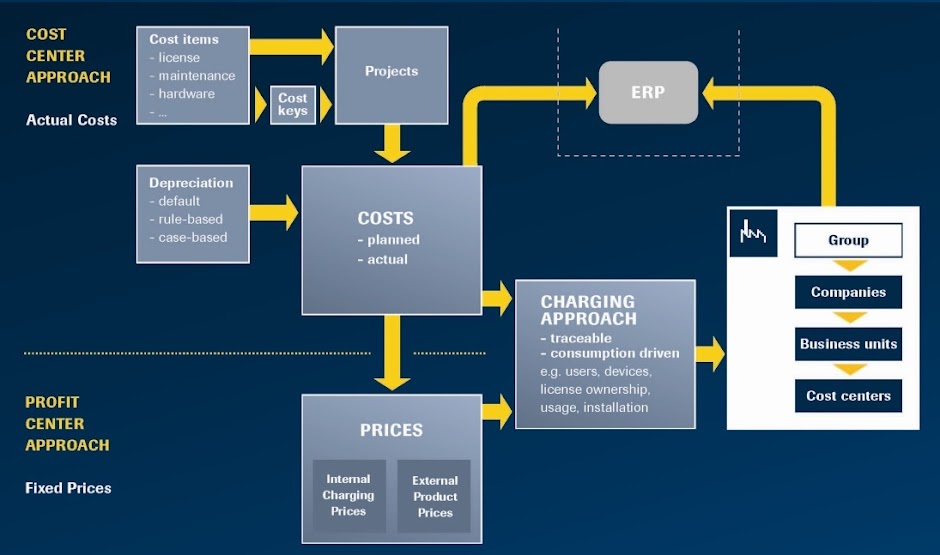BLOCK CONCEPT OF DEPRECIATION AND ITS IMPACT ON CASH FLOWS
In case of block concept of depreciation of a capital budgeting problem , the following points should be kept in mind:
a) The amount on which the rate of depreciation is to be applied is determined as below:
Opening W.D.V. XX
Add: Purchase during the year XX
Less: Sale during the year (XX)
------------
The amount on which the rate of depreciation is to be applied XX
------------
b) In case the block in which the asset of the project belongs does not contain any other asset , at the end of the project the block becomes empty , due to the sale of the asset. As a result of which there is no question of depreciation in the last year of the project , as per the Income Tax Act and the rules made thereon. But there may be a Short Term Capital Gain or Short Term Capital Loss. Such Short Term Capital Gain or Loss is calculated as below:
Opening W.D.V. ( in the last year ) XX
Less: Sale value of the asset (XX)
--------------
Short Term Capital Gain / Short Term Capital Loss XX
--------------
In case the value is positive it is loss , otherwise it is gain.
c) In the above case , if it is a short term capital gain ( say G ) , there is a outflow of cash amounting to G x t , where , t is the tax rate. In case it is a short term capital loss ( say L ) , the following provision of Income Tax Act plays a very important role :
Short Term Capital Loss can be set off only against Capital Gain.
The implication of the above provision is that in case the problem contain any capital gain , there is a tax shield on short term capital loss ( i.e. Cash Inflow ) amounting to L x t . On the other hand , if there is no capital gain , tax shield on short term capital loss in the year of sale is not available ( i.e. No Cash Flow due to Short Term Capital Loss in the year of sale. ) It may be noted that Short Term Capital Loss cannot be adjusted against business profit.
d) In case the block in which the asset of the project belongs contain other asset also , the block does not become empty at the end of the project due to the sale of the asset of the project. So , there is no question of Short Term Capital / Loss at the end of the project. But depreciation is admissible. The amount on which rate of depreciation is to be applied is determined as follows:
Opening W.D.V. XX
Less: Sale Value of the Asset (XX)
---------------
Amount on which rate of depreciation is to be applied in the last year XX
-----------------
Illustration – 2.1: A project will cost Rs.40,000. Its stream of earning before depreciation, interest and taxes (EBDT) during first year through five years is expected to be Rs. 10,000 , Rs. 12,000 , Rs. 14,000 , Rs. 16,000 and Rs. 20,000. Assume a 50% tax rate and WDV rate of depreciation as 10%. Estimated scrap value of the asset at the end of the project is Rs. 10,000.
You are requested to calculate the annual Cash Flow After Tax of the project assuming that—
(a) the block to which the asset of the project belongs does not contain any other asset.
(b) the block to which the asset of the project belongs contains other asset also.
Solution:
Statement of Cash Flow After Tax For (a)
Particulars Year-1 Year-2 Year-3 Year-4 Year-5
EBDT 10,000 12,000 14,000 16,000 20,000
Less: Depn. (4,000) (3,600) (3,240) (2,916) Nil (Note-1)
---------- ---------- ---------- ----------- -----------
EBT 6,000 8,400 10,760 13,084 20,000
Less: Tax @ 50% (3,000) (4,200) (5,380) (6,542) (10,000)
--------- --------- -------- ----------- -----------
EAT 3,000 4,200 5,380 6,542 10,000
Add: Depn. 4,000 3,600 3,240 2.916 Nil
Add: Sale Value of Asset --- --- --- --- 10,000
-------- ---------- --------- ----------- ----------
Cash Flow After Tax 7,000 7,800 8,620 9,458 20,000
Note – 1: As the block does not contain any other asset , at the end of the project the block becomes empty due to the sale of the asset of the project. So , by virtue of the Income Tax Act and the rules made thereunder no depreciation is permissible in Year – 5.
Note – 2: Short Term Capital Loss due to the sale of the asset of the project is as follows:
Opening WDV in Year – 5 26,244
Less: Sale Value of the Asset (10,000)
----------
Short Term Capital Loss 16,244
----------
As there is no Capital Gain in the problem , cash inflow due to Tax Shield on Short Term Capital Loss has not been taken into account.
Note – 3: In case there is Short Term Capital Gain , there is a cash outflow due to payment of tax on such gain. Consider the illustration and assume that the sale value of the asset is Rs.30,000. Short Term Capital Gain in Year – 5 is Rs.(30,000 – 26,244) = Rs.3,756. Additional Cash Outflow in Year – 5 is Rs.3,756 X 50% = Rs.1,878. Resultant Cash Inflow in Year – 5 would be Rs.(20,000 – 1,878) = Rs.18,122.
Statement of Cash Flow After Tax For (b)
In this case Cash Flows for Year – 1 to Year – 4 would remain same. Only the cash flow for Year – 5 would change. It is to be determined as below:
EBDT 20,000
Less: Depreciation ( 26,244 – 10,000 ) X 10% (1,624)
-----------------
EBT 18,376
Less: Tax @ 50% (9,188)
-----------------
EAT 9,188
Add: Depreciation 1,624
Add: Sale of Asset 10,000
-------------------
Cash Flow After Tax 20,812
